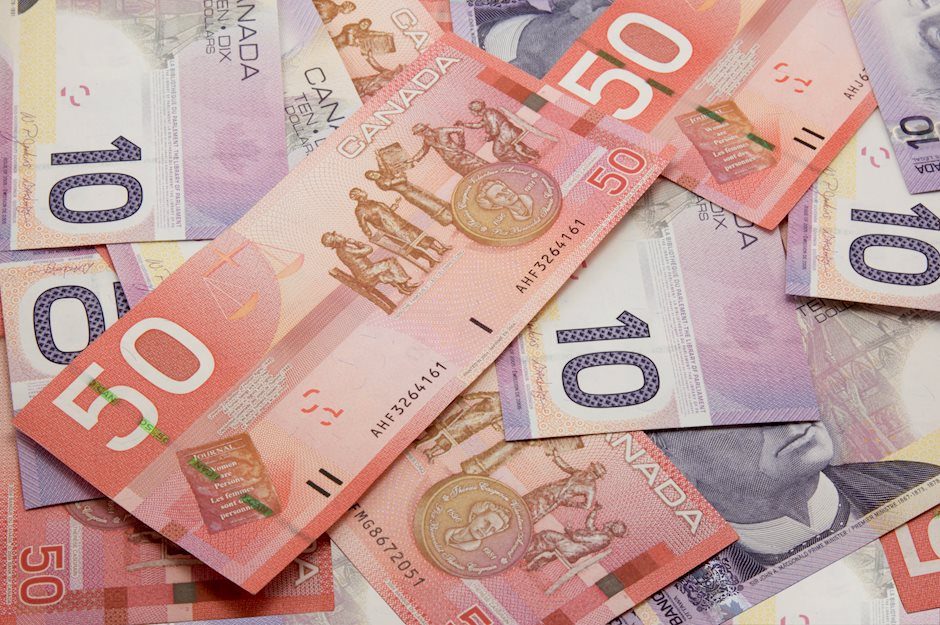USD/CAD gains ground to multi-year highs near 1.4300, Fed rate decision looms
- USD/CAD edges higher to around 1.4310 in Wednesday’s early Asian session.
- The Fed will likely cut interest rates by 25 bps at the December meeting on Wednesday.
- The Canadian Dollar weakens to nearly a five-year low on the political risks.

The USD/CAD pair trades with mild gains near 1.4310 during the early Asian session on Wednesday. The Canadian Dollar (CAD) fell to the lowest level since April 2020 amid political turbulence in Canada. The markets might turn cautious ahead of the US Federal Reserve (Fed) interest rate decision, which is expected to cut the interest rates by 25 basis points (bps) on Wednesday at the end of its two-day meeting.
The Fed is widely expected to lower borrowing costs on Wednesday for the third meeting in a row. Markets are now almost fully pricing a quarter of a percentage point cut at the Fed's December meeting, compared with about 78% odds a week ago, according to the CME FedWatch tool. The Fed’s Press Conference and the Summary of Economic Projections (SEP), or the Dot Plot, will be pored over for clues about next year's outlook.
Data released by the US Census Bureau on Tuesday showed that Retail Sales in the US rose 0.7% MoM in November, compared to the 0.5% increase (revised from 0.4%) seen in October. The reading came in better than the market expectation for a rise of 0.5%. However, the US Retail Sales data had no impact on expectations that the Fed would cut interest rates at its December meeting on Wednesday.
On the other hand, the Loonie remains on the defensive after Canada's Deputy Prime Minister Chrystia Freeland quit Monday in a surprise move, saying she disagreed with Prime Minister Justin Trudeau over US President-elect Donald Trump's tariff threats. Canadian Prime Minister Justin Trudeau faced growing calls to resign as the resignation of Freeland marked the first open dissent against Prime Minister Trudeau from within his cabinet.
"We think this level of political turbulence will raise uncertainty levels for Canadian consumers and businesses, adding to the headwinds already facing productivity-enhancing investment," Karl Schamotta, chief market strategist at Corpay, said in a note.
Canadian Dollar FAQs
The key factors driving the Canadian Dollar (CAD) are the level of interest rates set by the Bank of Canada (BoC), the price of Oil, Canada’s largest export, the health of its economy, inflation and the Trade Balance, which is the difference between the value of Canada’s exports versus its imports. Other factors include market sentiment – whether investors are taking on more risky assets (risk-on) or seeking safe-havens (risk-off) – with risk-on being CAD-positive. As its largest trading partner, the health of the US economy is also a key factor influencing the Canadian Dollar.
The Bank of Canada (BoC) has a significant influence on the Canadian Dollar by setting the level of interest rates that banks can lend to one another. This influences the level of interest rates for everyone. The main goal of the BoC is to maintain inflation at 1-3% by adjusting interest rates up or down. Relatively higher interest rates tend to be positive for the CAD. The Bank of Canada can also use quantitative easing and tightening to influence credit conditions, with the former CAD-negative and the latter CAD-positive.
The price of Oil is a key factor impacting the value of the Canadian Dollar. Petroleum is Canada’s biggest export, so Oil price tends to have an immediate impact on the CAD value. Generally, if Oil price rises CAD also goes up, as aggregate demand for the currency increases. The opposite is the case if the price of Oil falls. Higher Oil prices also tend to result in a greater likelihood of a positive Trade Balance, which is also supportive of the CAD.
While inflation had always traditionally been thought of as a negative factor for a currency since it lowers the value of money, the opposite has actually been the case in modern times with the relaxation of cross-border capital controls. Higher inflation tends to lead central banks to put up interest rates which attracts more capital inflows from global investors seeking a lucrative place to keep their money. This increases demand for the local currency, which in Canada’s case is the Canadian Dollar.
Macroeconomic data releases gauge the health of the economy and can have an impact on the Canadian Dollar. Indicators such as GDP, Manufacturing and Services PMIs, employment, and consumer sentiment surveys can all influence the direction of the CAD. A strong economy is good for the Canadian Dollar. Not only does it attract more foreign investment but it may encourage the Bank of Canada to put up interest rates, leading to a stronger currency. If economic data is weak, however, the CAD is likely to fall.
Author

Lallalit Srijandorn
FXStreet
Lallalit Srijandorn is a Parisian at heart. She has lived in France since 2019 and now becomes a digital entrepreneur based in Paris and Bangkok.

















